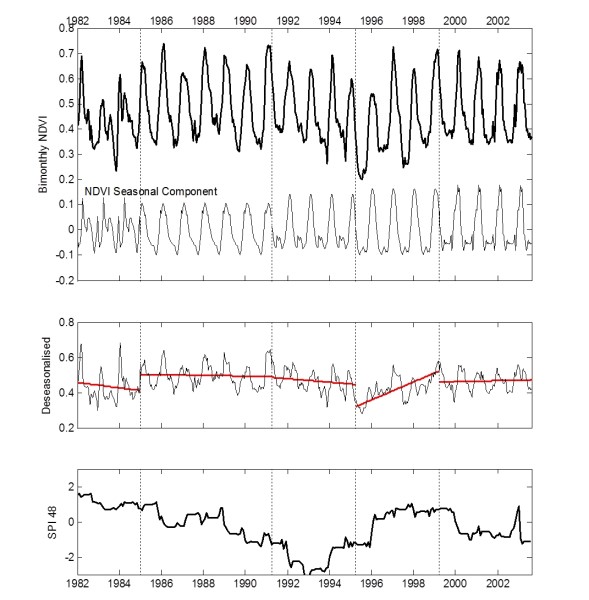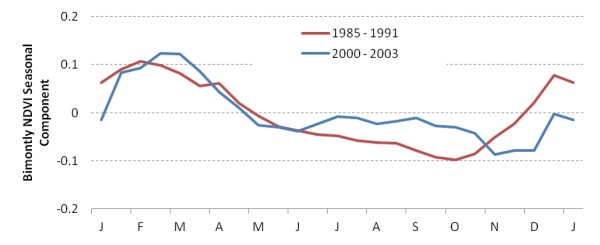| Authors: | Tsanis, I. K. and Daliakopoulos, I. N. |
| Editor: | Jane Brandt |
| Source document: | Daliakopoulos, I. and Tsanis, I. (eds) 2014. Drivers of change in the study sites. CASCADE Project Deliverable 2.2. CASCADE Report 06. 59 pp. |
In the Messara Study Site, the succession of dry years, combined with mismanagement in the resources depletion intensity (e.g. water abstraction, grazing) have caused marked breaks in the greenness trends. A significant disturbance takes place two years after the manifestation of the minimum SPI48 value, in 1995. After the end of this pronounced drought, the deseasonalised NDVI signal increases following a stabilization of the SPI48. Regarding the seasonal component of the NDVI, few changes occur between periods 1985-1991 and 2000-2003. The small dependence on climatic factors can be attributed to the high degree of agricultural activities within the investigated location. Here, water resources and optimal growing conditions for vegetation nearly all year long and can account for the relatively stable NDVI during summer months.


In order to investigate the sensitivity of the method, an alternative area with a smaller proportion of agricultural land versus graze land within the Messara Study Site is also investigated. At this alternative location, vegetation suffered at a greater degree during the 1993 drought. Indeed, this location shows signs of degradation as early as in 1989, possibly due to the lower resilience or the reduced vegetation cover ecosystem. In this case vegetation manages to recover after 1997, however it is possible that the time required for recovery increases as aridity and water stress drive the system to its limits.

Note: For an overview of the historical drivers of change and their analysis in all study sites see »Drivers of change in the study sites.
